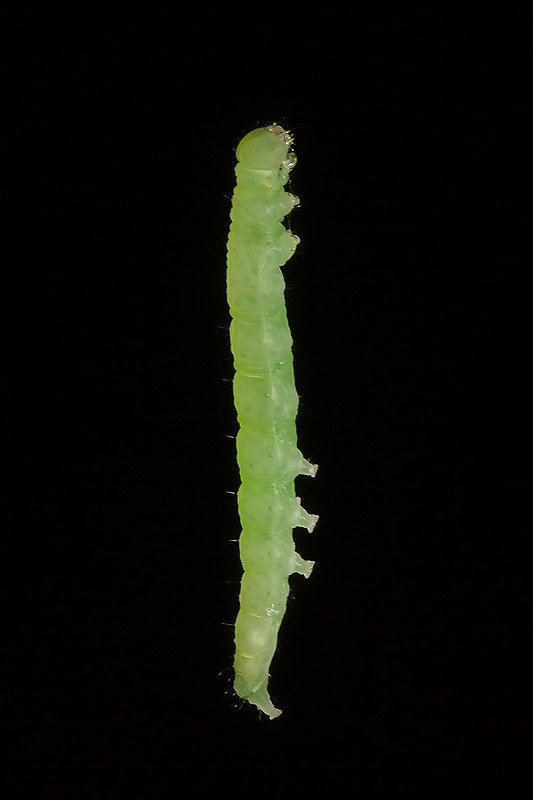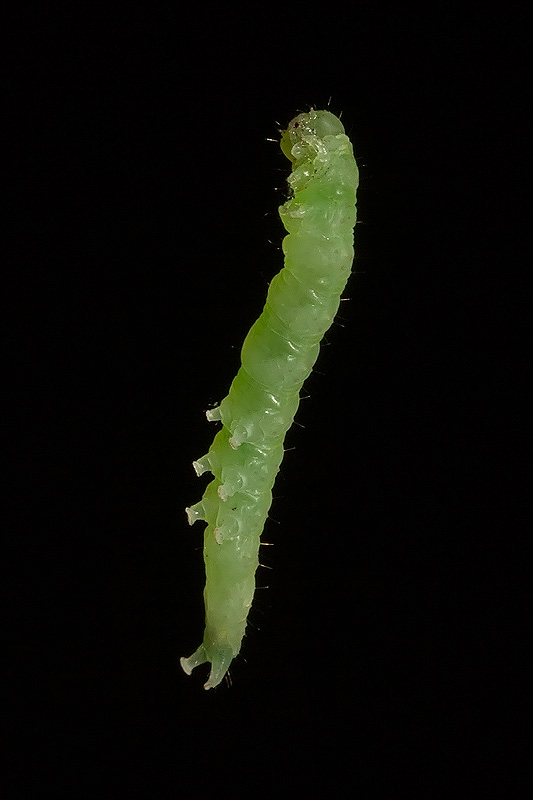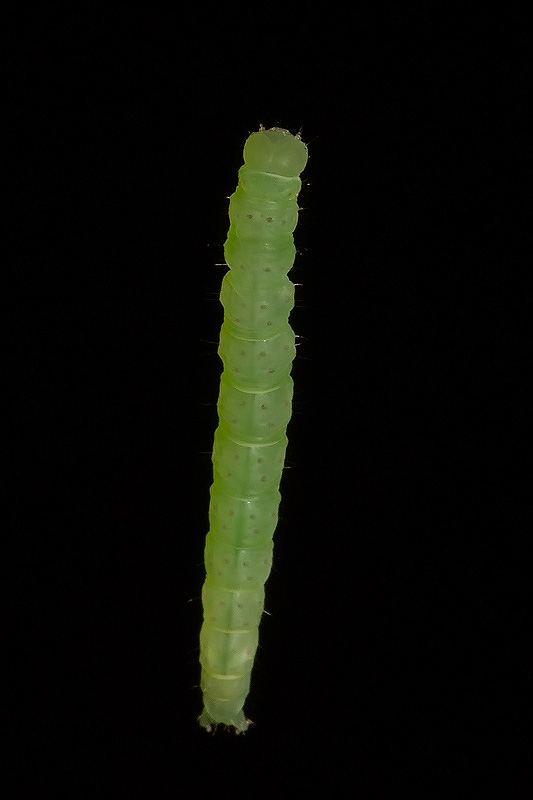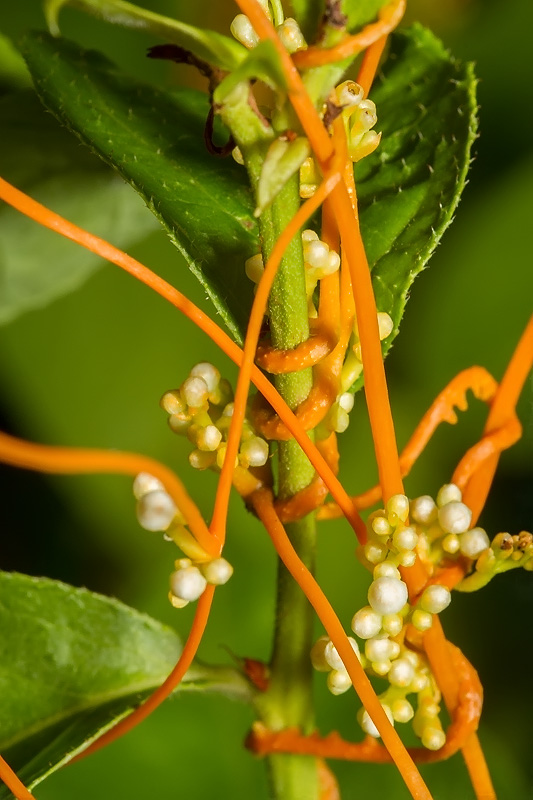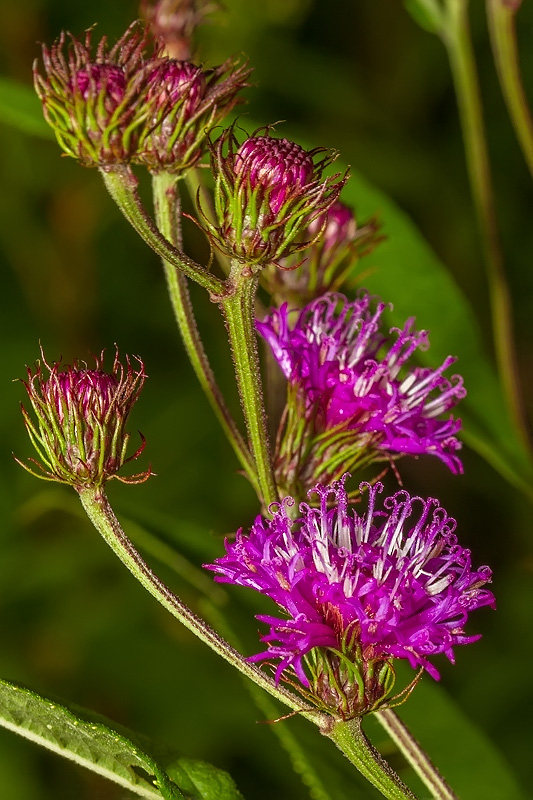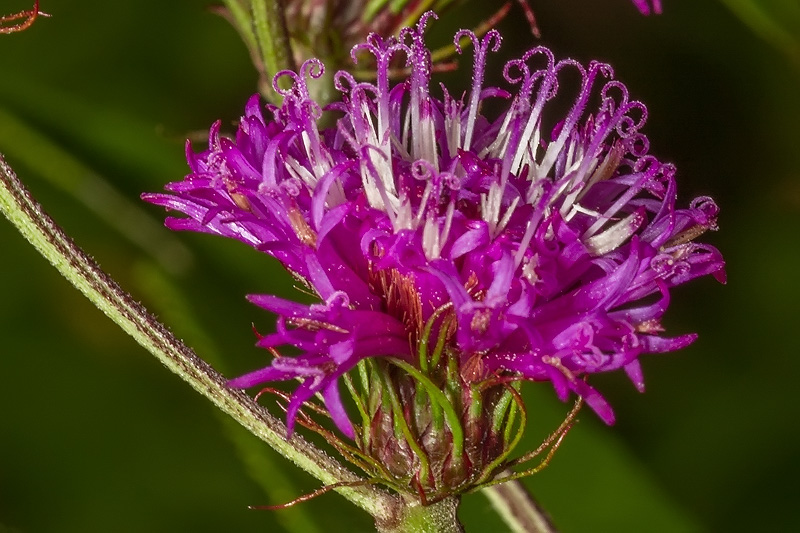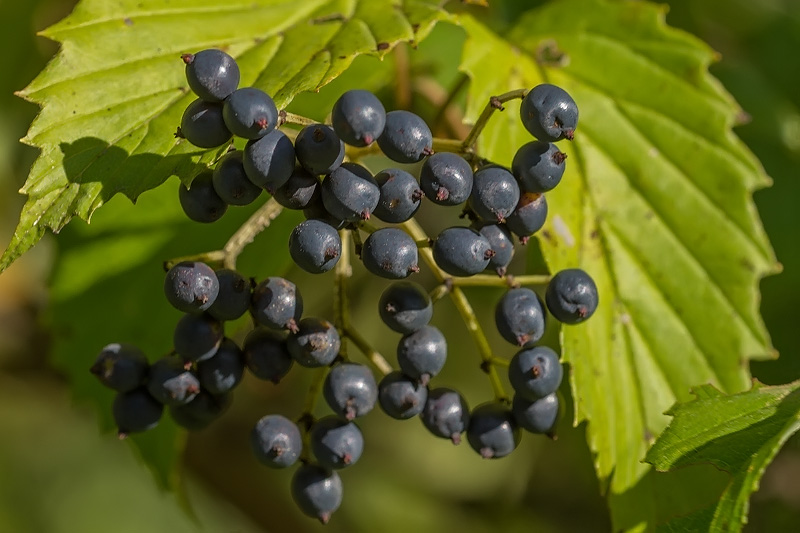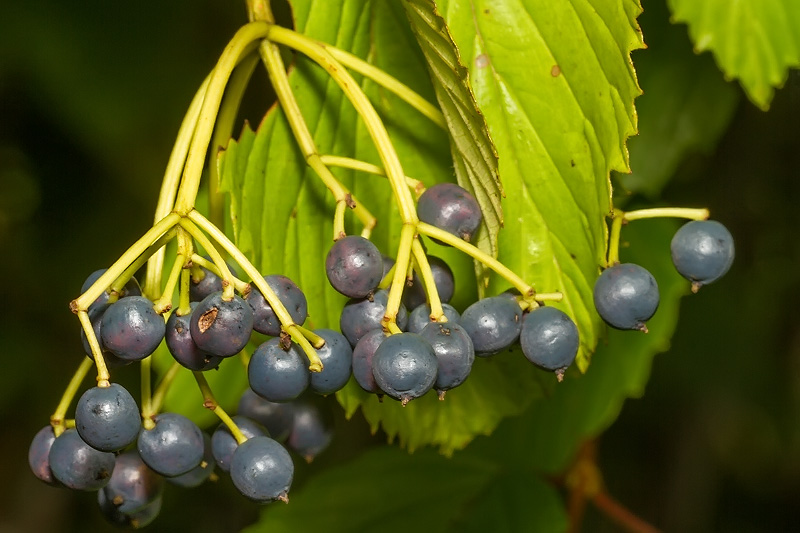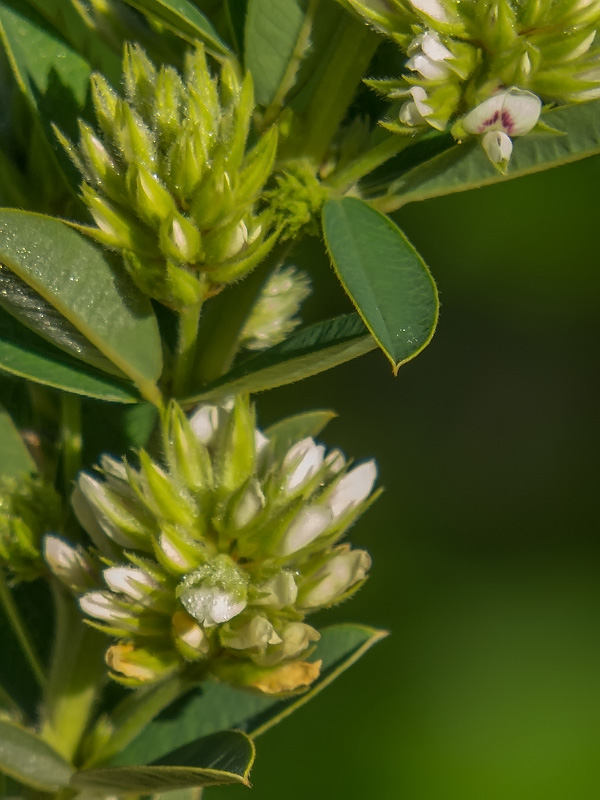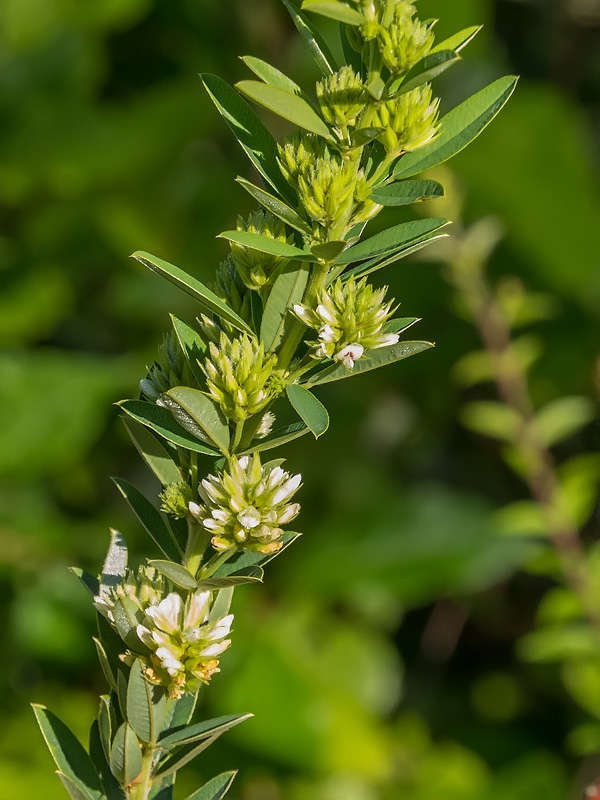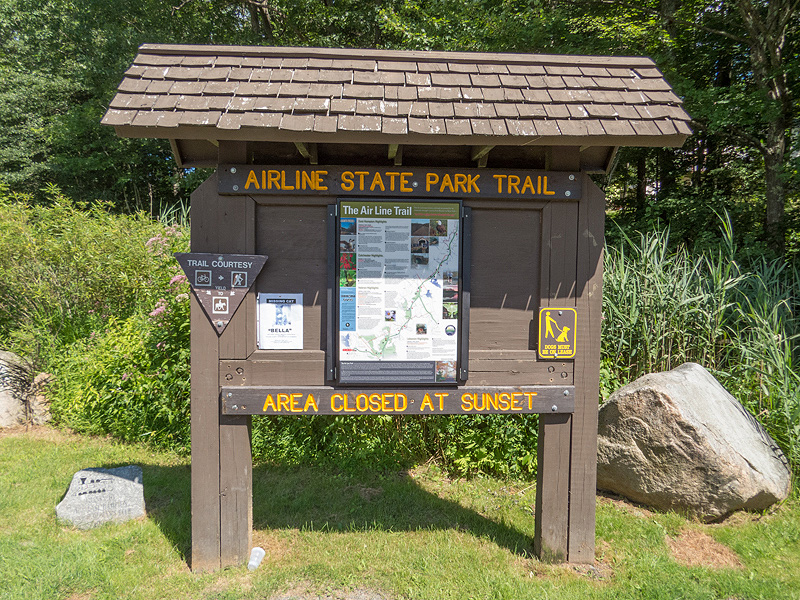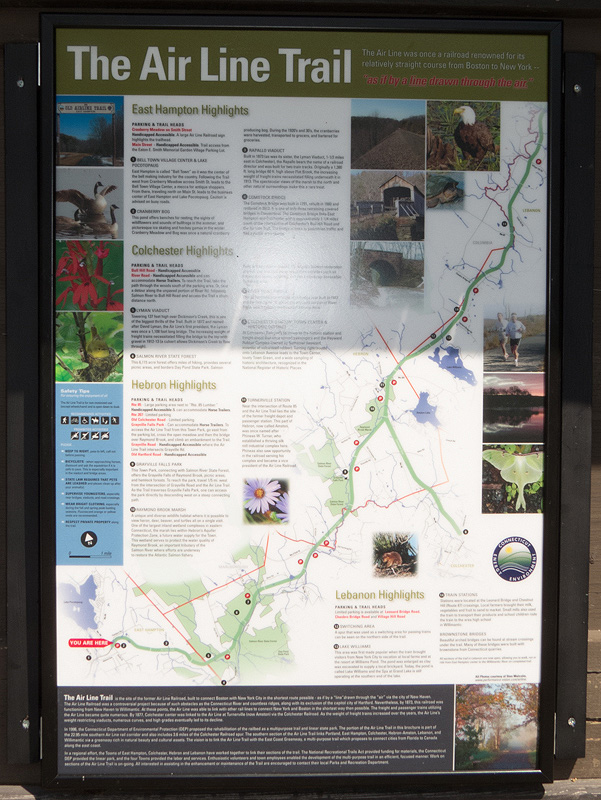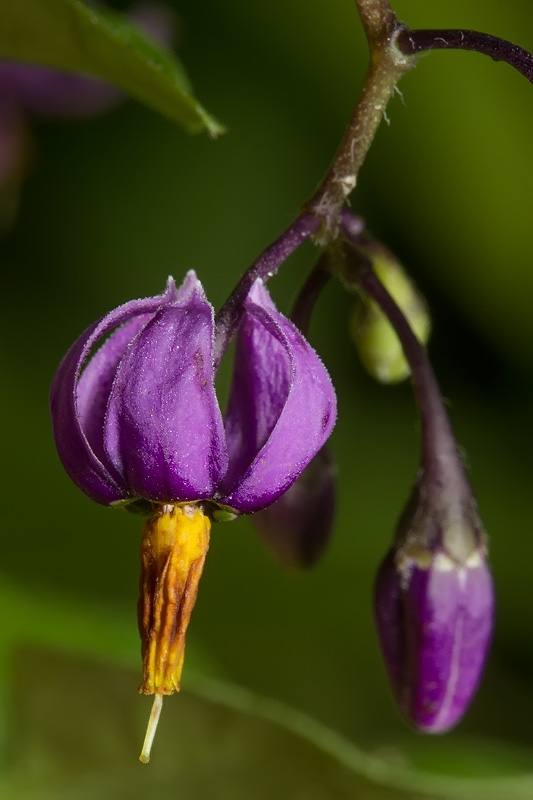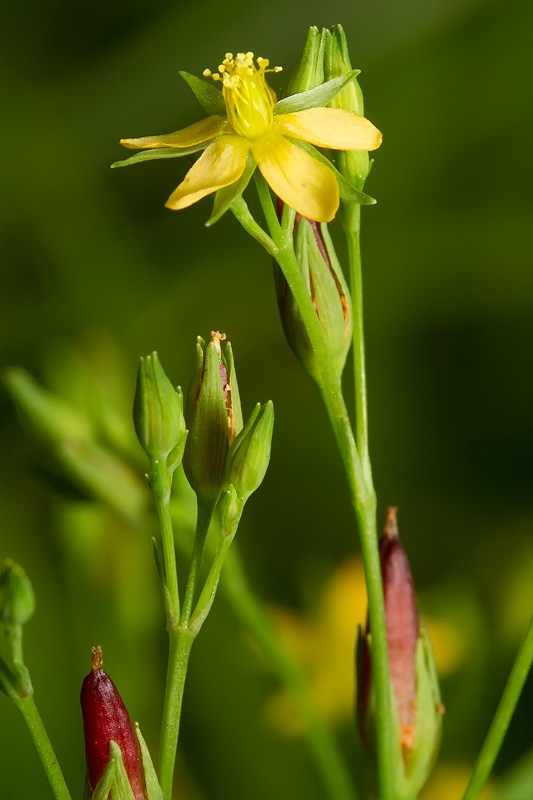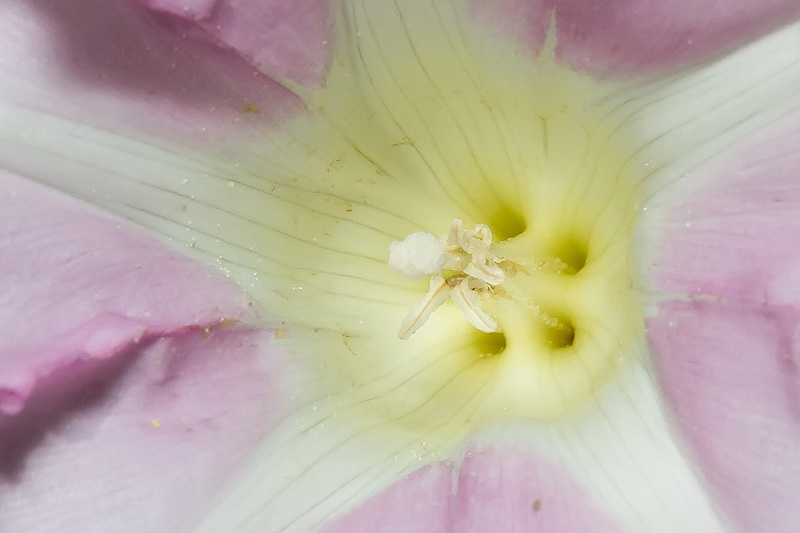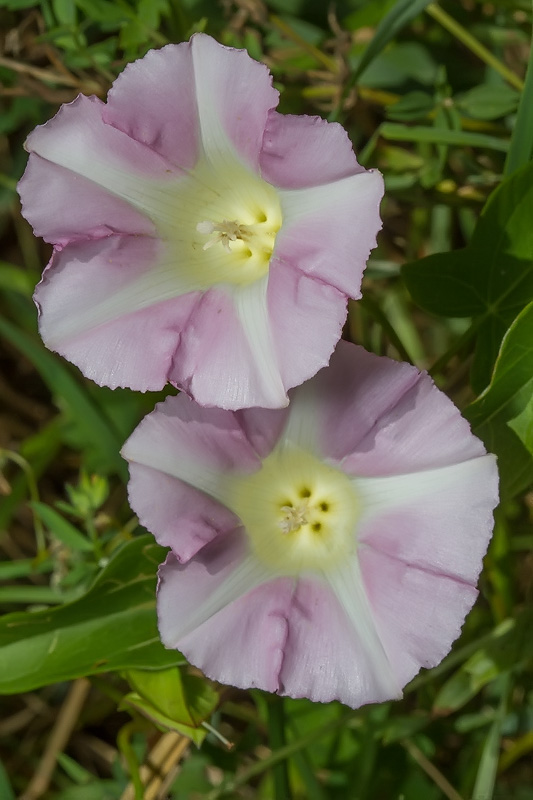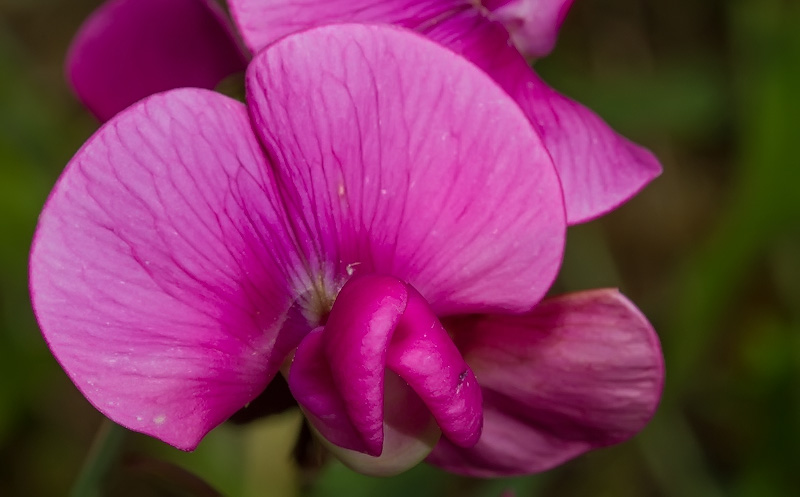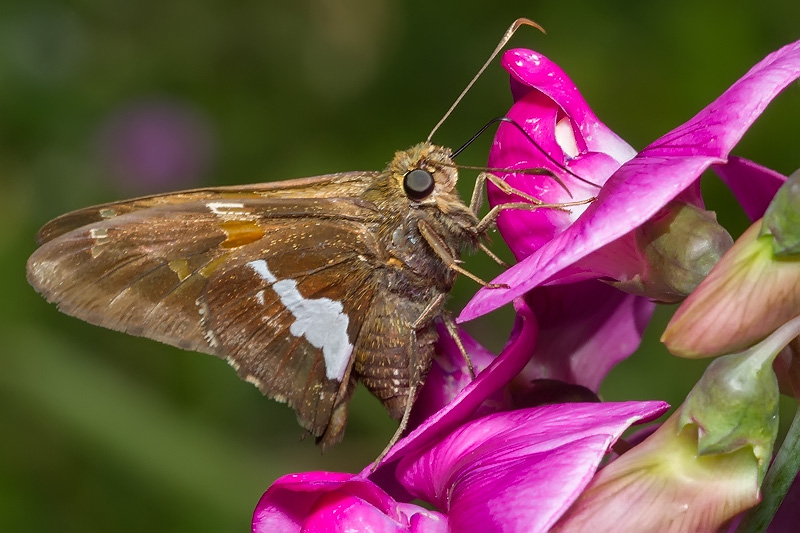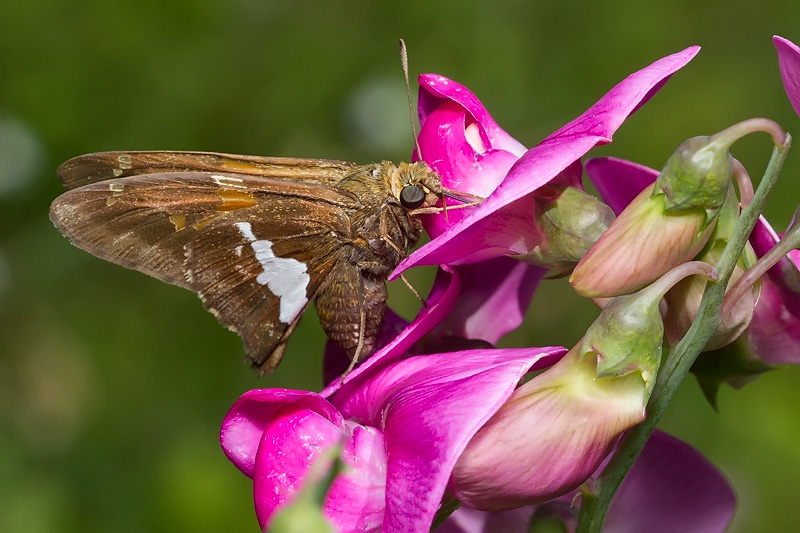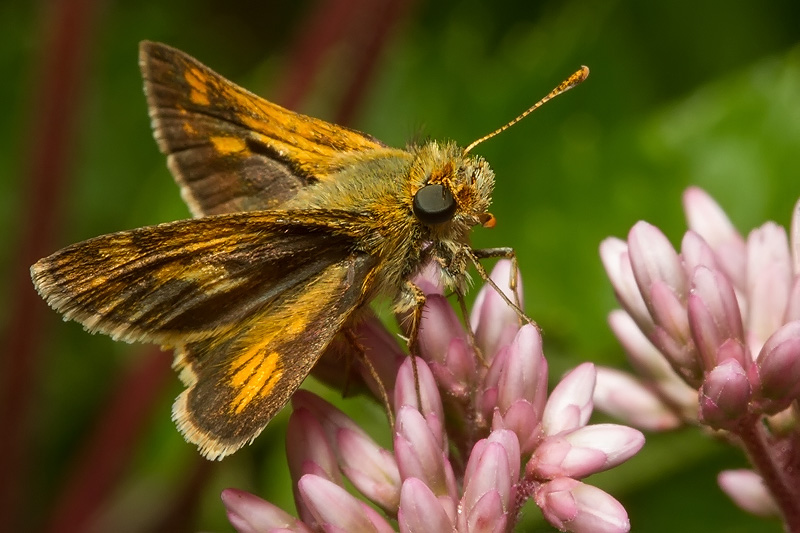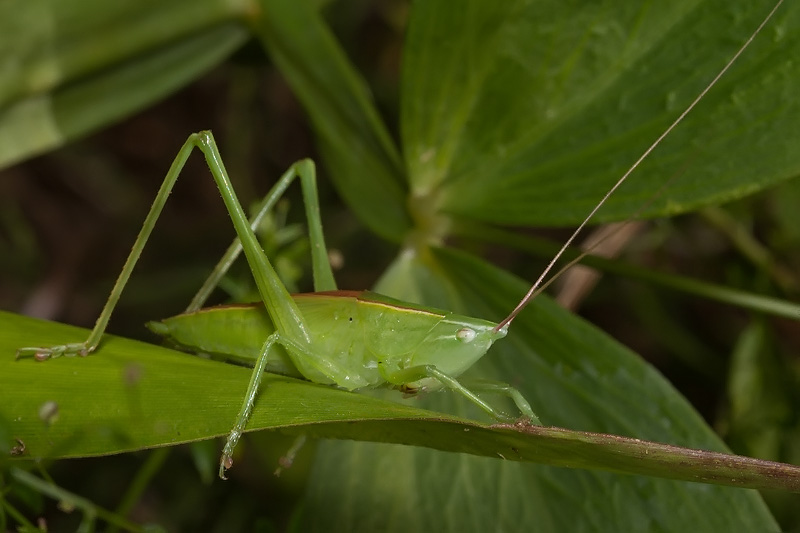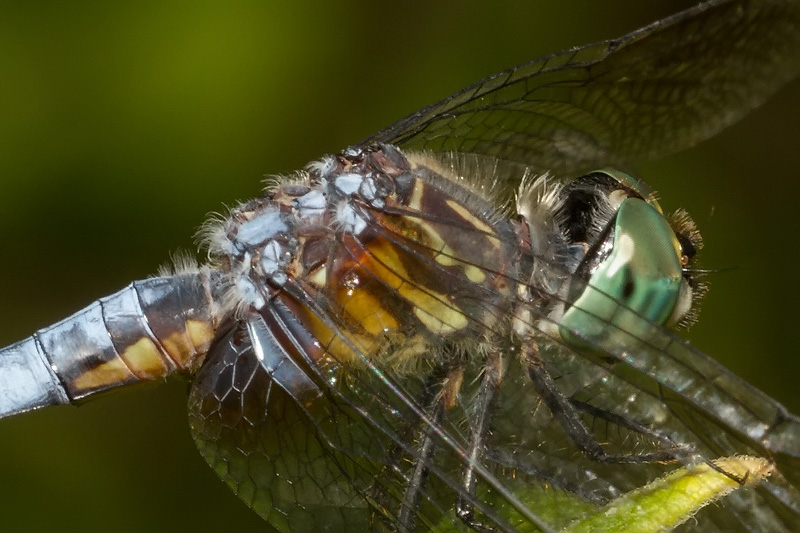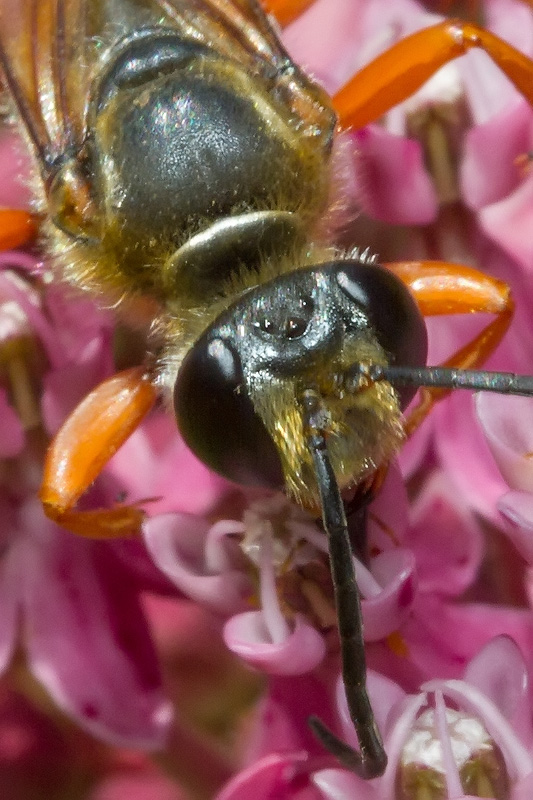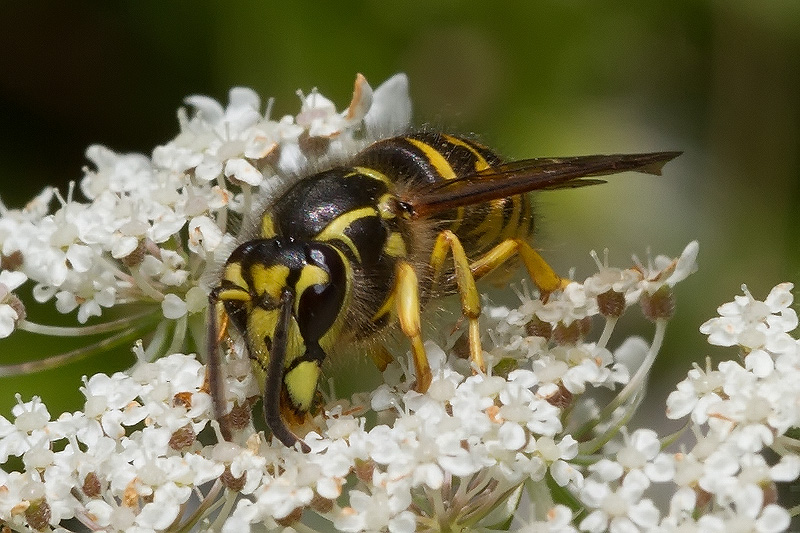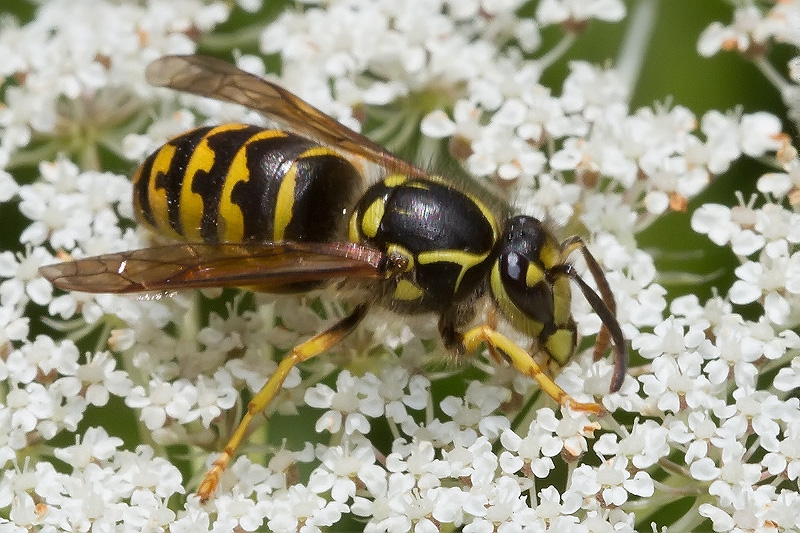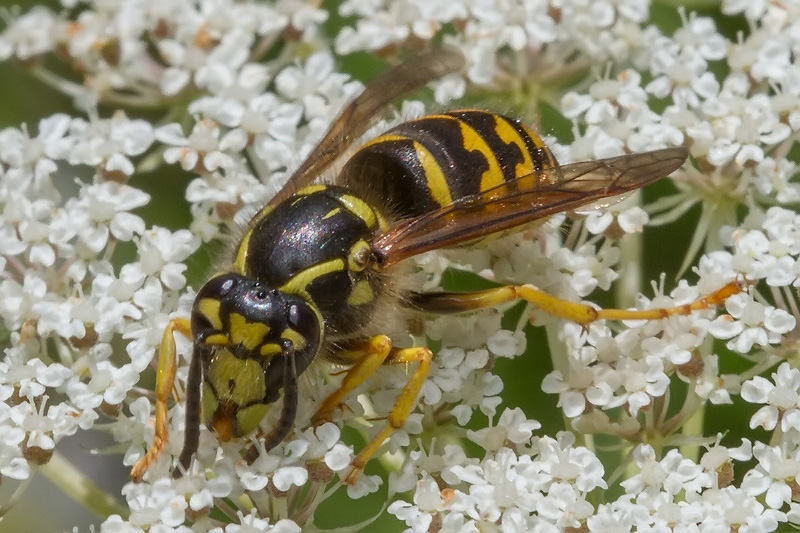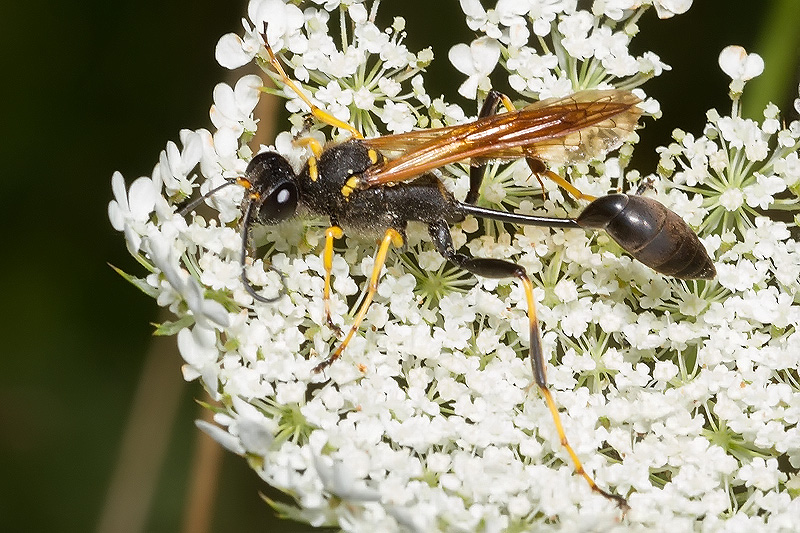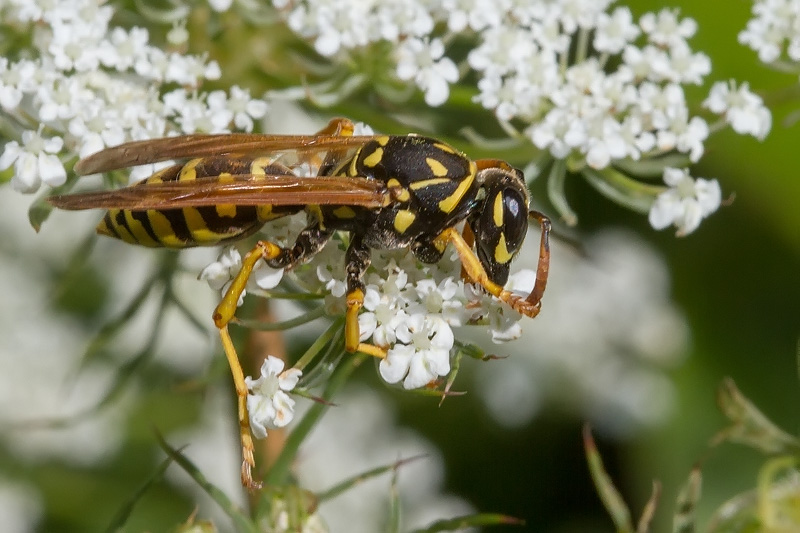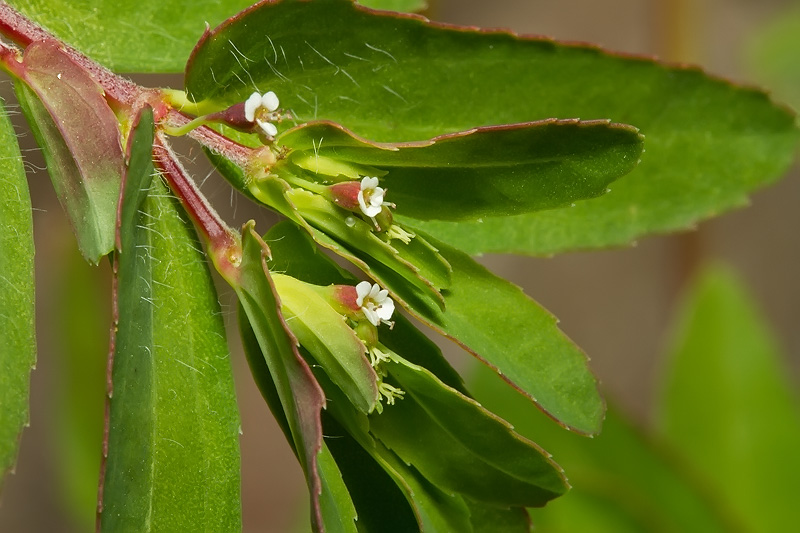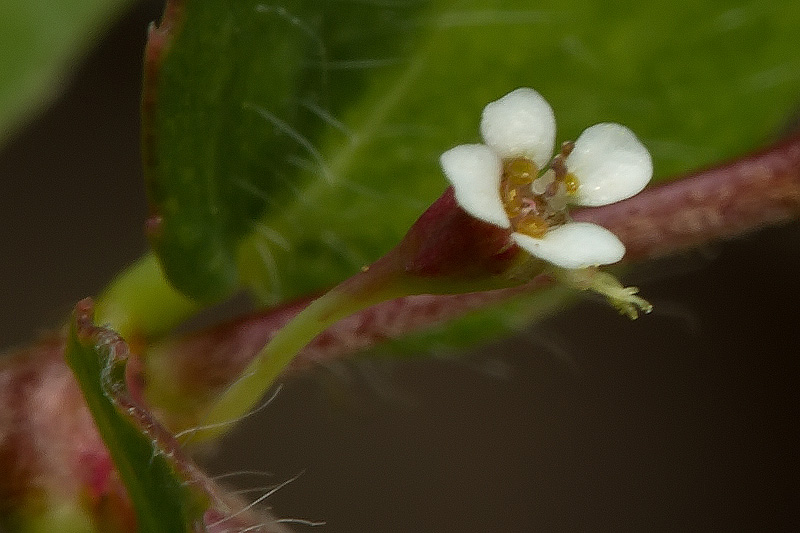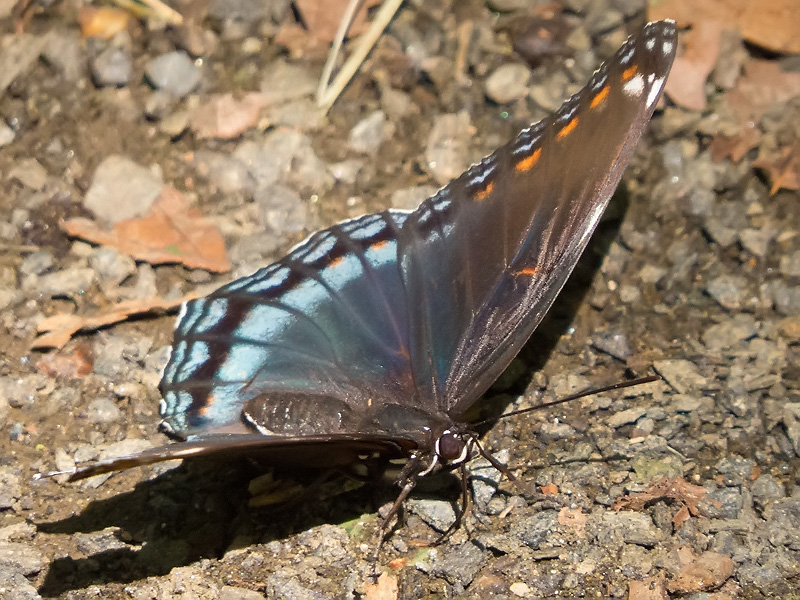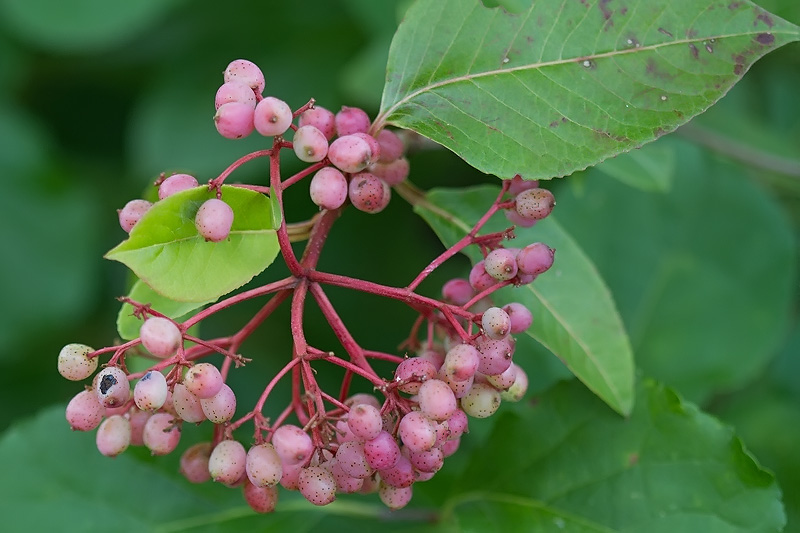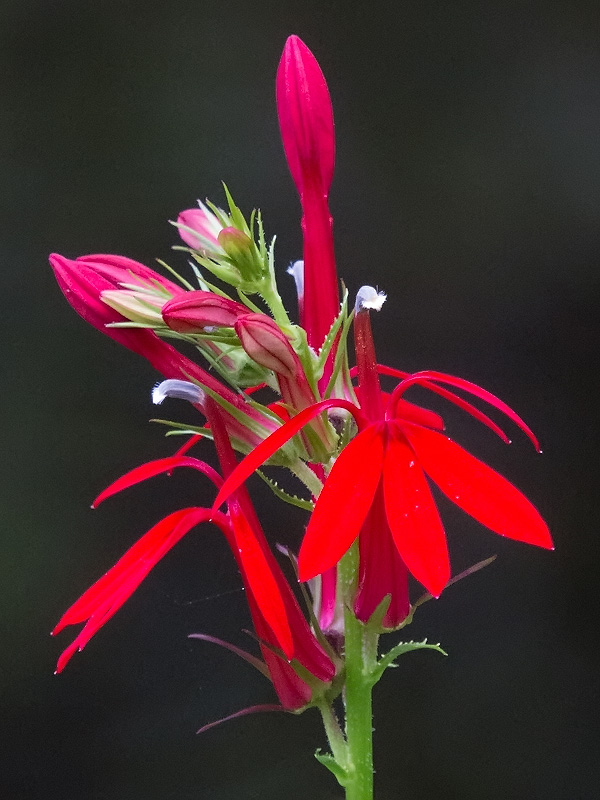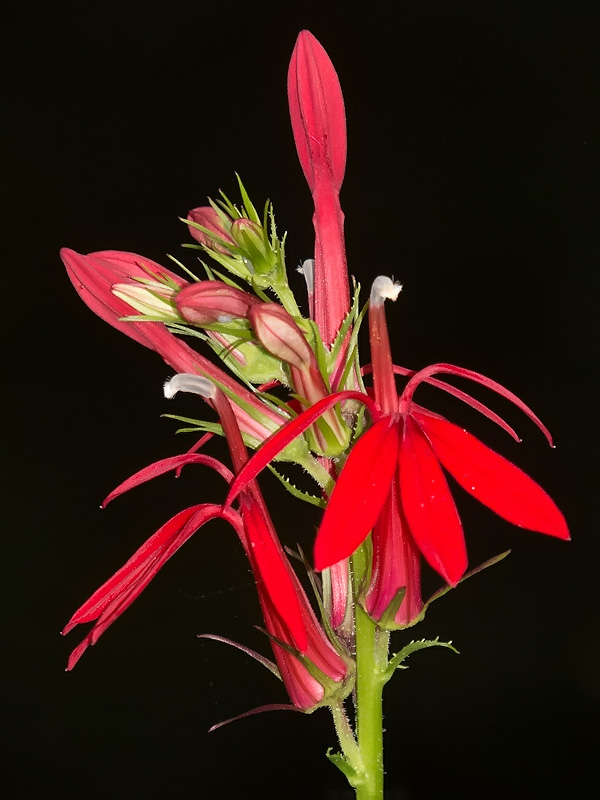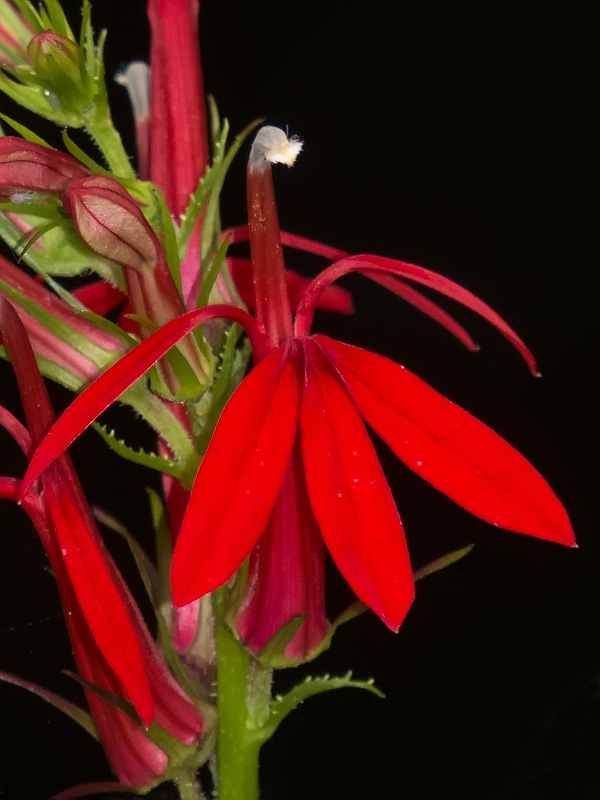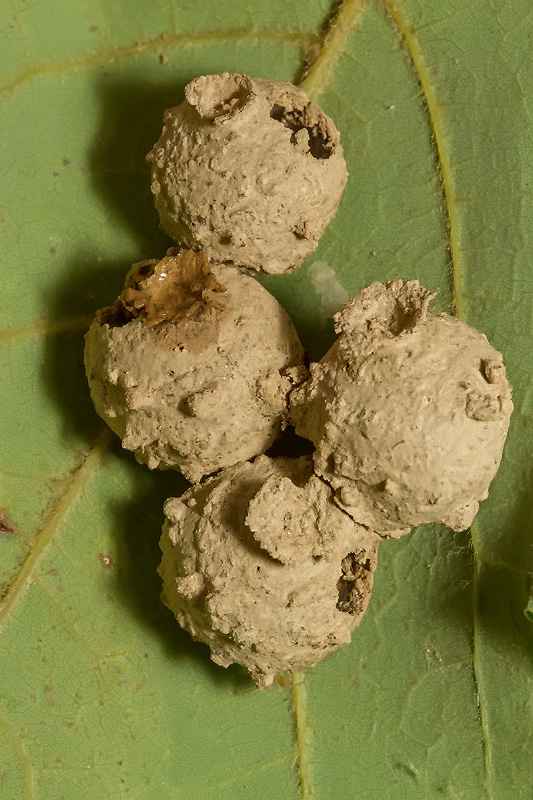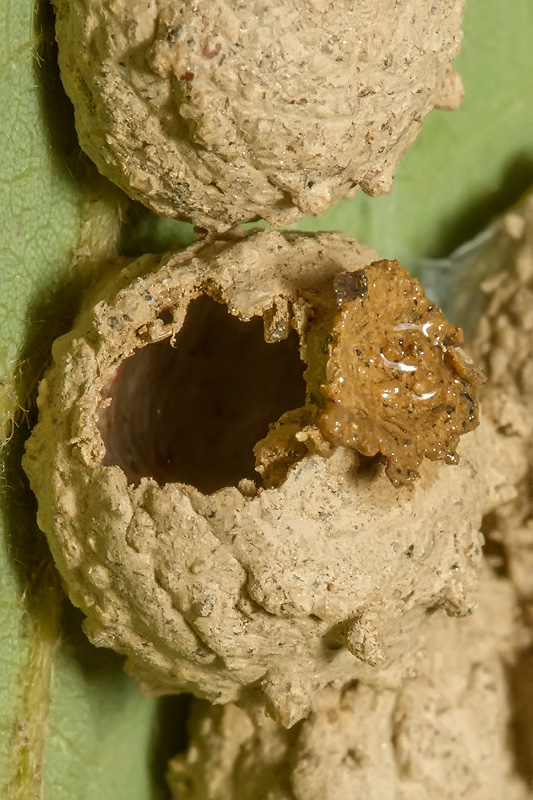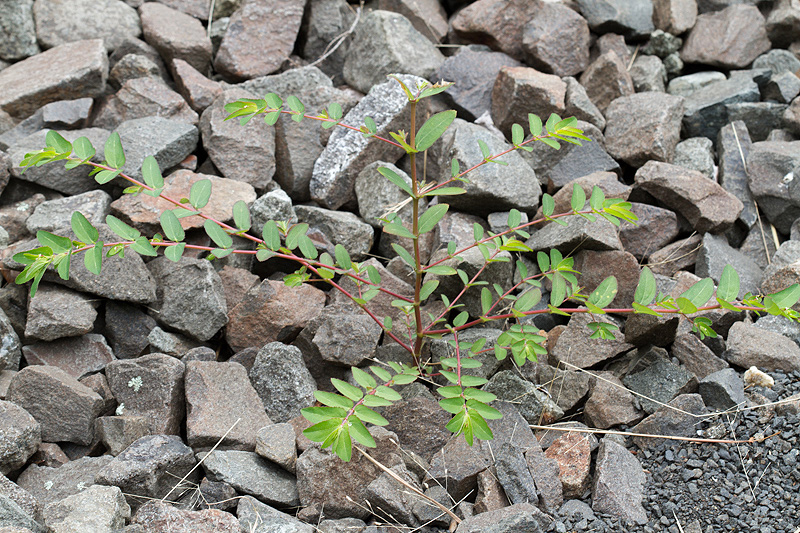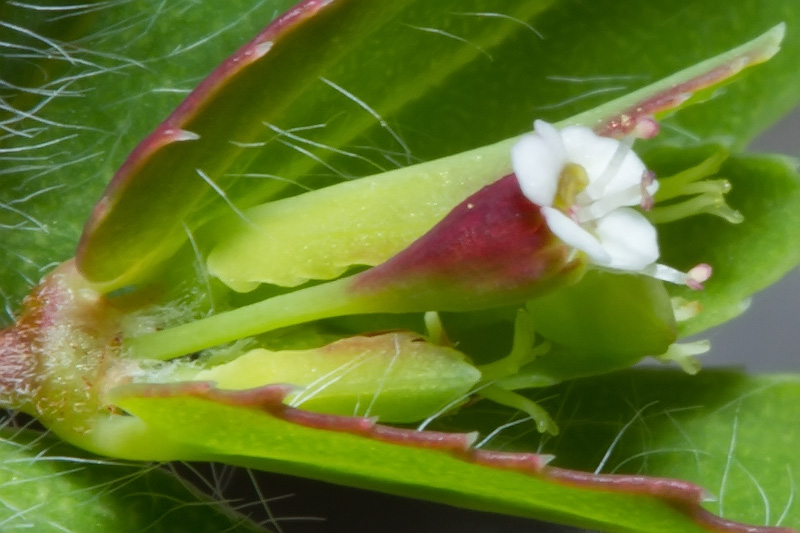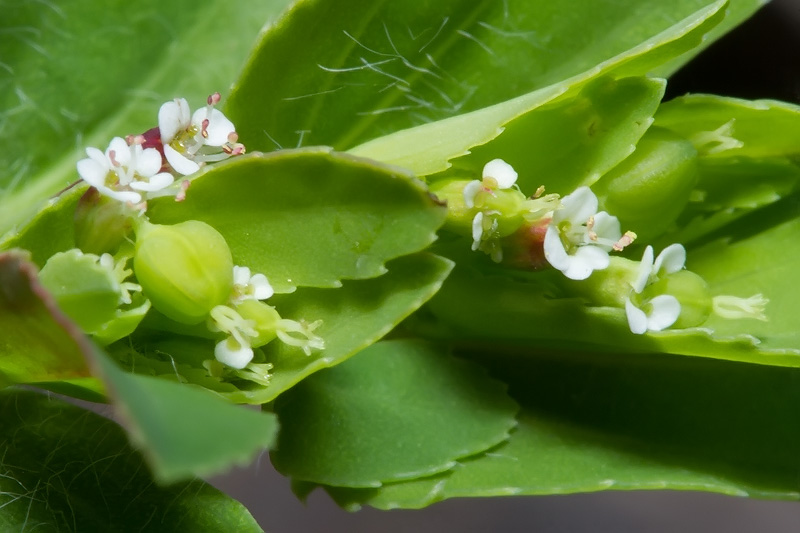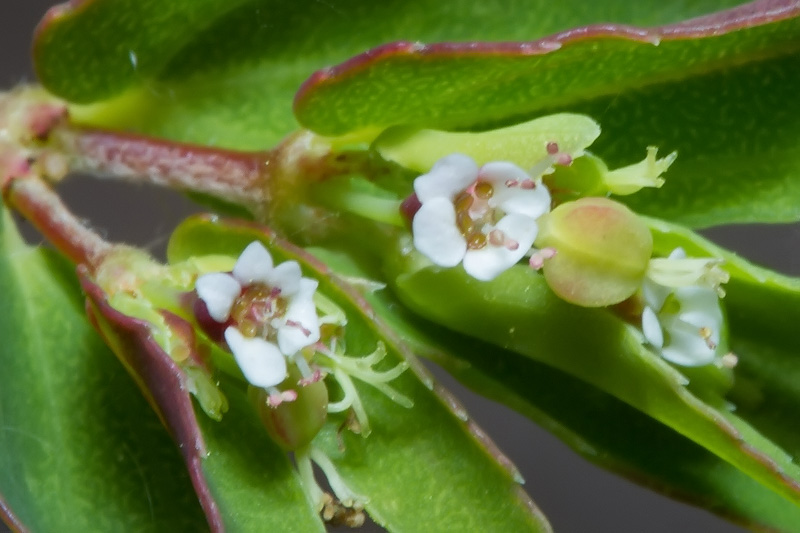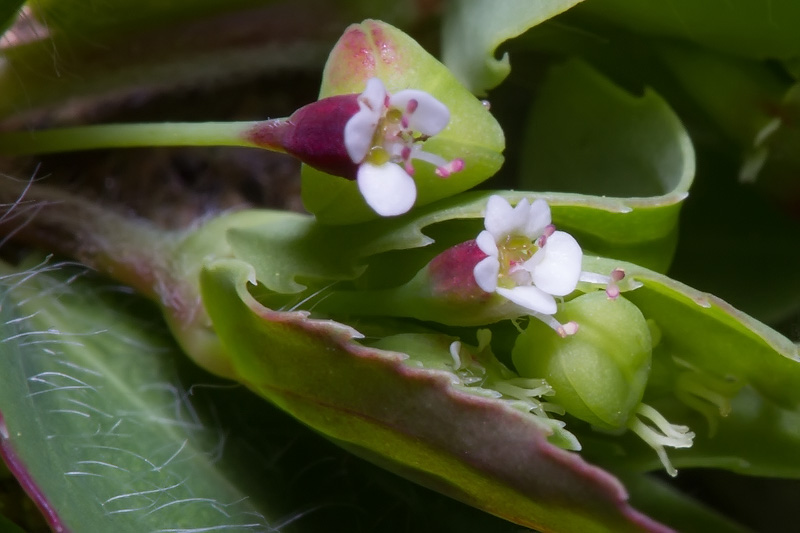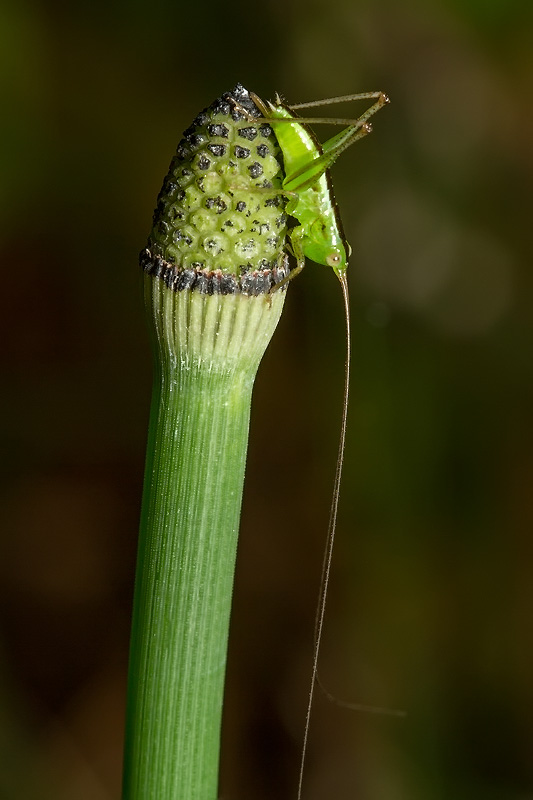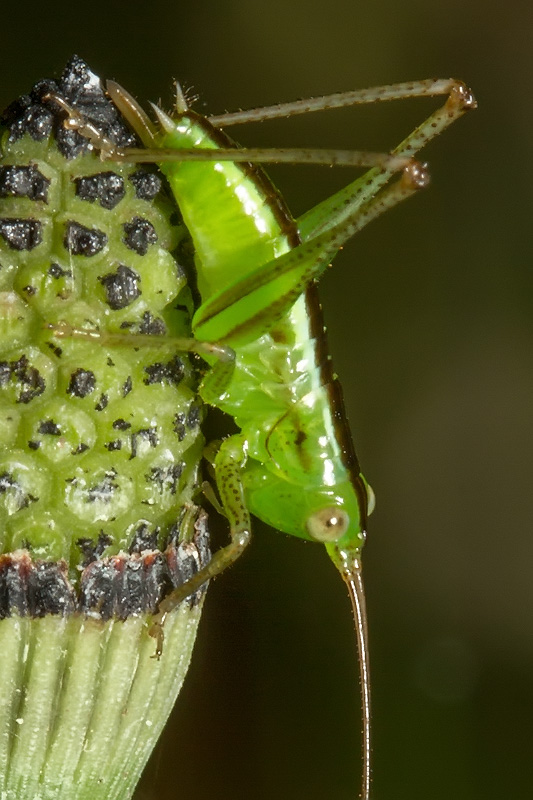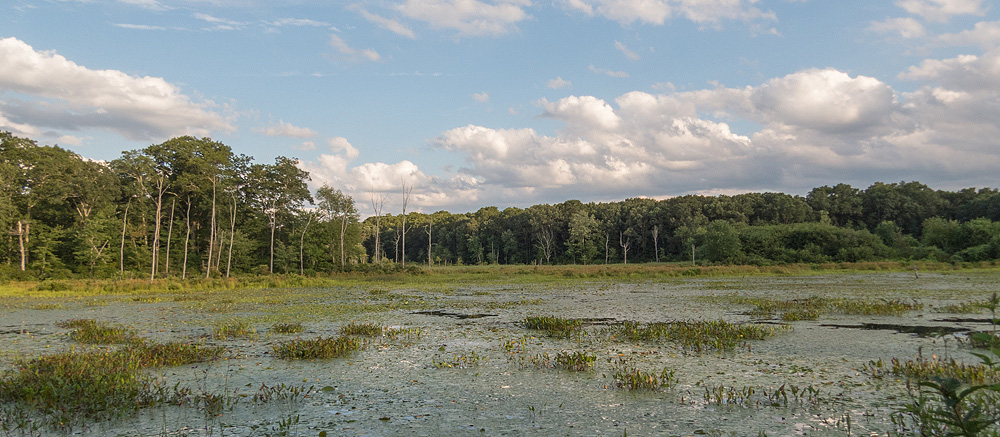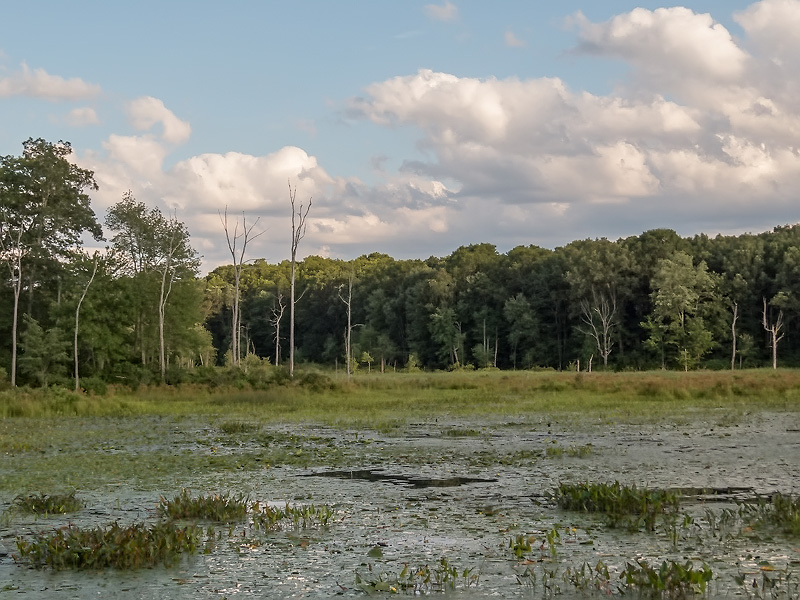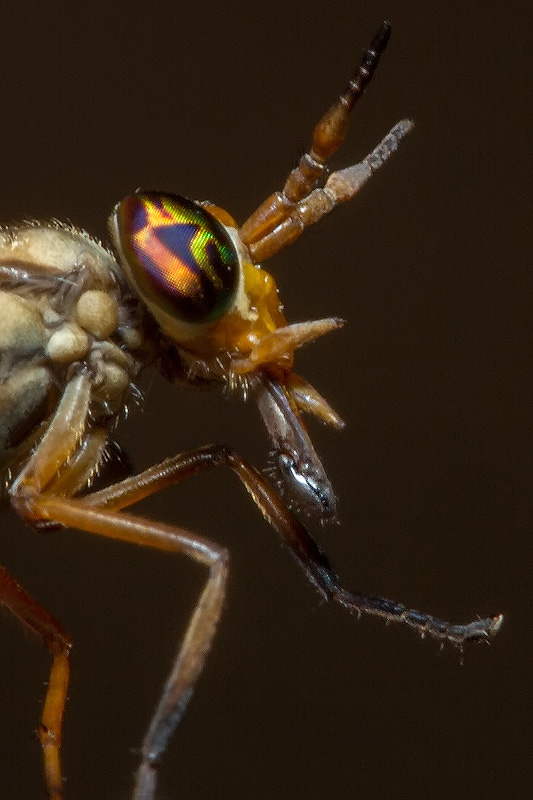Along the Air Line... 2013 - Summer, Part 5 The Air Line Trail in Eastern Connecticut - Stan Malcolm Photos |
mHome Page Stan's FlickR Albums |
August 5th. A small caterpillar catching the sun, dangling from a silken thread in a wooded section of the trail. |
Caterpillars will sometimes drop like this as a defense when attacked by predators (e.g., ants) on leaves above; or perhaps spend the night suspended to avoid attack. |
|
Dodder (Cuscuta gronovii) is the most likely common species) is a parasitic plant (no chlorophyll or leaves) that draws nutrients from the plants it entwines. |
New York Ironweed (Vernonia noveboracensis) is just starting to bloom. |
|
Northern Arrowwood (Viburnum recognitum). The dark blue berries are eaten by birds but consist of large seeds with just a thin coating of tart fleshy fruit. |
The shoots were reportedly used by Native Americans as arrow shafts. |
Round-headed Bush-clover (Lespedeza capitata). You can see one open pea-like flower in the upper right. |
Sadly, the plants were mowed by the time I returned in late afternoon for better close up photos of open blossoms. (Nevertheless, I'm graterful that most of the invasive Tick Trefoil was cut down.) |
A brief afternoon stop at Cranberry Bog in East Hampton. I noticed that the new Air Line Trail map and guide is up. |
Still disconcerting to see my photos posted on the trail signs. |
Nightshade (Solanum dulcamara), |
Canada St. Johnswort (Hypericum canadense), the first time I've seen it in 12 years of walking the trail. Easily overlooked though; it's tiny. |
Hedge Bindweed (Convolvulus sepium). "Bindweed" because its vines wrap around every plant it contacts. |
It's in the same genus as Morning Glory. |
Sweet Pea (Lathyrus odoratus). |
A Silver-spotted Skipper (Epargyreus clarus). |
|
I think this is Peck's Skipper (Polites peckius). |
A nearly full-grown Katydid nymph (Family Tettigoniidae). |
|
A male Blue Dasher dragonfly (Pachydiplax longipennis). |
|
Great Golden Digger Wasp (Family Sphecidae, Sphex ichneumoneus). |
Various Vespid wasps (Family Vespidae). |
You can tell Vespids by the way they hold their wings pleated over their back, like a folded paper fan. |
|
|
|
August 7tth. One point five millimeter white flowers on the rocky, sandy soil atop Lyman Viaduct. (I'm trying to get an ID. See below.) |
|
Further west on a sunny patch of soil, I saw a Red-spotted Purple (Limenitis arthemis astyanax). |
Back at Raymond Brook Marsh, Shadbush (Amelanchier sp.) berries have ripened. |
A few Cardinal Flowers (Lobelia cardinalis) are blooming at the west end of the marsh, far fewer than in previous years. |
|
|
August 8th. Three of the four Potter Wasps have emerged from the pots where as larvae they fed on insects stored by their parent. |
I had assumed they would emerge from the "lid" of the pot, but they simply drill through the side. In hindsight, that seems the easier way to do it. (In this photo, the lid is intact and happens to have a raindrop on it.) |
Back out to Lyman Viaduct for another look at yesterday's unidentified plant. Thanks to Janet Novak, I know it's a Spurge (Family Euphorbiaceae) but species ID still to come. (Milky juice and a cup-like "inflorescence" make it a Spurge.) |
August 12th: Janet Novak just got back to be with a solid ID. This native plant is Hairy of Wormseed Sandmat (Euphorbia vermiculata). See: https://gobotany.newenglandwild.org/species/euphorbia/vermiculata/ |
|
|
Remember, the white flower "cups" are only 1.5 mm across. We're talking really teeny. (I love my new macro rig.) |
August 10th. West of Route 149, a Katydid nymph (Family Tettigoniidae) resting on a fertile cone of Scouring Rush (Equisetum hyemale). |
|
Late afternoon of a fine summer day at Raymond Brook Marsh. |
|
This is what a Deerfly (Chrysops sp.) looks like close up. |
